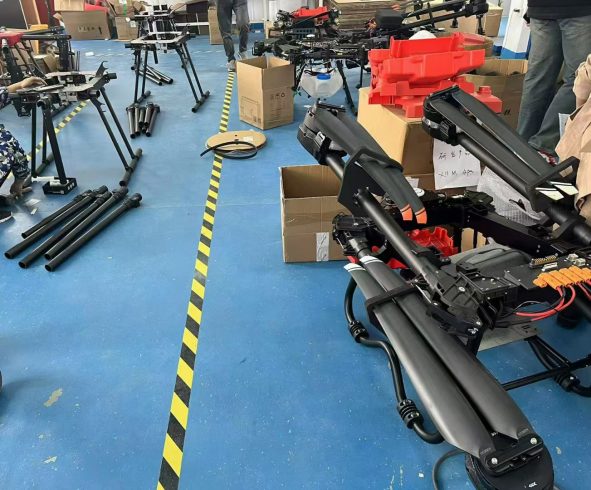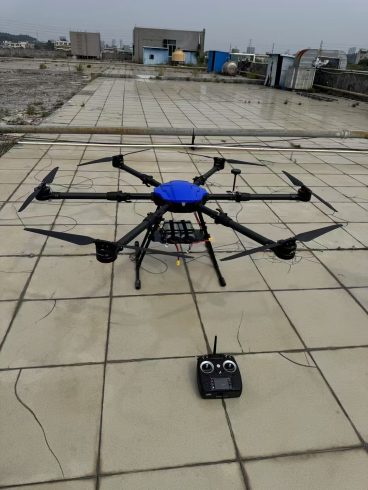![图片[1]-Drone Spraying with AI Integration: The Future of Precision Agriculture-msoen](https://www.msoen.com/wp-content/uploads/2025/04/2caef68db4184641-768x1024.jpg)
The fusion of artificial intelligence (AI) and agricultural drones is redefining crop management, turning what was once a labor-intensive, error-prone process into a precise, autonomous science. AI-powered spraying drones are not just tools—they’re intelligent partners capable of making real-time decisions, optimizing chemical use, and predicting field challenges before they escalate. This article explores how AI integration is transforming drone spraying, offering farmers unprecedented accuracy, efficiency, and sustainability.
How AI Elevates Drone Spraying
AI transforms drones from remote-controlled sprayers into autonomous systems that learn, adapt, and improve. Key capabilities include:
- Real-Time Decision-Making: Analyzing data mid-flight to adjust spray parameters.
- Predictive Analytics: Forecasting pest outbreaks or nutrient deficiencies.
- Self-Optimization: Improving performance over time via machine learning.
Core AI Technologies in Spraying Drones
- Computer Vision & Object Detection
- Disease Identification: AI models trained on millions of crop images detect early signs of blight, rust, or fungal infections with 95%+ accuracy.
- Weed vs. Crop Discrimination: Convolutional neural networks (CNNs) distinguish weeds from crops, enabling herbicide targeting without damaging plants.
- Canopy Density Analysis: Measures foliage thickness to adjust droplet penetration and coverage.
- Machine Learning (ML) for Predictive Spraying
- Pest Risk Modeling: AI correlates historical pest data with weather, soil moisture, and crop stages to predict infestation zones.
- Optimal Spray Timing: Recommends application windows based on humidity, wind, and temperature to minimize evaporation and drift.
- Autonomous Navigation & Path Planning
- Dynamic Route Optimization: AI recalculates flight paths in real time to avoid obstacles, wind gusts, or no-spray zones.
- Swarm Intelligence: Coordinates fleets of drones to divide large fields efficiently, avoiding overlaps or gaps.
- Edge AI Processing
- Onboard Inference: Lightweight ML models run directly on drones, eliminating latency from cloud processing.
- Data Compression: Filters irrelevant data to preserve bandwidth and battery life.
Benefits of AI-Driven Drone Spraying
- Hyper-Precision Chemical Application
- Plant-Level Targeting: AI directs sprays only to infected plants, reducing chemical use by 50–70%.
- Variable Droplet Sizes: Adjusts droplets from 50 microns (fine for fungicides) to 300 microns (coarse for herbicides) based on AI analysis.
- Cost & Resource Efficiency
- Fuel/Battery Savings: Optimized routes cut energy use by 20–30%.
- Labor Reduction: Autonomous drones reduce manual scouting and spraying labor by 80%.
- Environmental Protection
- Drift Minimization: AI models predict wind patterns to adjust nozzle angles, reducing chemical drift by up to 90%.
- Ecosystem Preservation: Targeted spraying protects pollinators and aquatic life near fields.
- Data-Driven Farm Management
- Yield Prediction: Correlates spray data with satellite imagery to forecast harvests.
- Soil Health Insights: Tracks chemical residues and nutrient absorption to guide sustainable practices.
Case Study: AI Drones in Action
A 500-acre cotton farm in Texas adopted AI-powered drones to combat bollworm infestations exacerbated by climate volatility. Results over two seasons:
- AI-Powered Scouting: Drones detected bollworm egg clusters 10 days earlier than manual scouts.
- Precision Insecticide Sprays: Reduced chemical use by 60%, saving $28,000 annually.
- Yield Increase: 15% higher yield due to healthier plants and minimized chemical stress.
Challenges & Solutions
- Data Quality & Bias
- Challenge: AI models trained on limited or regional data may underperform in new environments.
- Solution: Federated learning allows drones worldwide to share anonymized data, improving model robustness.
- Regulatory Hurdles
- Challenge: Strict rules govern autonomous drone operations in many countries.
- Solution: Explainable AI (XAI) provides transparent decision logs to satisfy regulators.
- High Initial Costs
- Challenge: AI-enabled drones cost 2–3× more than basic models.
- Solution: Subscription-based AI software (e.g., “AI-as-a-Service”) lowers upfront investment.
Future Trends in AI Drone Spraying
- Generative AI for Synthetic Training Data: Creates realistic 3D models of pests or diseases to train drones in virtual fields.
- AI-Organic Hybrid Systems: Combines chemical sprays with AI-directed biocontrol agents (e.g., beneficial insects).
- Carbon Footprint Optimization: AI balances spraying efficiency with emission reduction goals.
- Voice-Activated Control: Farmers dictate commands (e.g., “Spray Zone C at 2L/ha”) via natural language processing (NLP).
Implementing AI Spraying Drones: Key Considerations
- Crop Compatibility: Ensure AI models are trained for your specific crops (e.g., vineyards vs. row crops).
- Connectivity: Edge AI minimizes reliance on cellular networks in remote areas.
- Farmer Training: Focus on interpreting AI insights, not just operating hardware.
Conclusion
AI-integrated drone spraying represents a quantum leap in agricultural technology, merging the physical and digital worlds to create smarter, greener farms. By enabling precision at the plant level and foresight at the field level, these systems empower farmers to combat climate volatility, labor shortages, and regulatory pressures. While challenges like costs and data biases persist, the trajectory is clear: AI is not just enhancing drone spraying—it’s reimagining the very fabric of modern agriculture.
As AI evolves, expect drones to become proactive partners, anticipating problems before they arise and delivering solutions with surgical accuracy. For farmers ready to embrace this revolution, the rewards—higher yields, lower costs, and a lighter environmental footprint—are within reach.











暂无评论内容